- Learning Tips
- Exam Guides
- School Life

How to Write a Video Essay: A Step-by-Step Guide and Tips
- by Joseph Kenas
- January 5, 2024
- Writing Tips
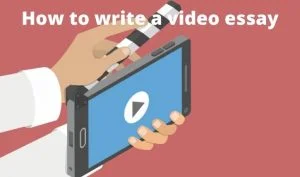
The video essay has become an increasingly popular way of presenting ideas and concepts in the age of the internet and YouTube. In this guide, we present a step-by-step guide on how to write a video essay and tips on how to make it.
While it is easy to write a normal essay, the structure of the video essay is a bit of a mystery, owing to the newness of the term.
However, in this article, we are going to define what is a video essay, how to write a video essay, and also How to present a video essay well in class.
What is a Video Essay?
A video essay is a video that delves into a certain subject, concept, person, or thesis. Video essays are difficult to characterize because they are a relatively new form, yet they are recognized regardless. Simply, video essays are visual compilations that try to persuade, educate, or criticize.

These days, there are many creatives making video essays on topics like politics, music, movies, and pop culture.
With these, essays have become increasingly popular in the era of video media such as Youtube, Vimeo, and others.
Video essays, like photo and traditional essays, tell a story or make a point.
The distinction is that video essays provide information through visuals.
When creating a video essay, you can incorporate video, images, text, music, and/or narration to make it dynamic and successful.
When you consider it, many music videos are actually video essays.
Since making videos for YouTube and other video sites has grown so popular, many professors are now assigning video essays instead of regular essays to their students. So the question is, how do you write a video essay script?
Steps on How to Write a Video Essay Script
Unscripted videos cost time, effort, and are unpleasant to watch. The first thing you should do before making a video writes a script, even if it’s only a few lines long. Don’t be intimidated by the prospect of writing a script. All you need is a starting point.
A video script is important for anyone who wants to film a video with more confidence and clarity. They all contain comparable forms of information, such as who is speaking, what is said, where, and other important details.
While there are no precise criteria that a video essay must follow, it appears that most renowned video essayists are adhering to some steps as the form gets more popular and acknowledged online.
1. Write a Thesis
Because a video essayist can handle a wide range of themes, video analysis essays lack defined bounds. The majority of essays, on the other hand, begin with a thesis.
A thesis is a statement, claim, theme, or concept that the rest of the essay is built around. A thesis might be broad, including a variety of art forms. Other theses can be quite detailed.
A good essay will almost always have a point to express. Every video analysis essay should have a central idea, or thesis, that ties the film together.
2. Write a Summary
Starting with a brief allows you and your team to document the answers to the most pressing project concerns. It ensures that everyone participating in the video production is on the same page.
This will avoid problems of mixing ideas or getting stuck when you are almost completing the project.
3. Choose a Proper Environment and Appropriate Tools
When it comes to writing your script, use any tool you’re familiar with, such as pen and paper. Also, find a writing atmosphere that is relaxing for you, where you can concentrate and be creative.
Consider what you don’t have to express out loud when you’re writing. Visual elements will be used to communicate a large portion of your content.
4. Use a Template
When you don’t have to reinvent the process every time you sit down, you get speed and consistency.
It’s using your cumulative knowledge of what works and doing it over and over again. Don’t start with a blank page when I sit down to create a script- try to use an already made template.
5. Be Conversational
You want scripts that use language that is specific and targeted. Always avoid buzzwords, cliches, and generalizations. You want your audience to comprehend you clearly without rolling their eyes.
6. Be Narrative
Make careful to use a strong story structure when you’re trying to explain anything clearly. Ensure your script has a beginning, middle, and end, no matter how short it is. This will provide a familiar path for the viewers of your video script.
7. Edit Your Script
Make each word work for a certain position on the page when you choose your words.

They must serve a purpose.
After you’ve completed your first draft, go over your script and review it.
Then begin editing, reordering, and trimming. Remove as much as possible.
Consider cutting it if it isn’t helping you achieve your goal.
8. Read Your Script Loudly
Before recording or going on in your process, it’s recommended to read your script aloud at least once. Even if you won’t be the one reading it, this is a good method to ensure that your message is clear. It’s a good idea to be away from people so you may practice in peace.
Words that flow well on paper don’t always flow well when spoken aloud. You might need to make some adjustments based on how tough certain phrases are to pronounce- it’s a lot easier to change it now than when recording.
9. Get Feedback
Sometimes it is very difficult to point out your mistakes in any piece of writing. Therefore, if you want a perfect video essay script, it is advisable to seek feedback from people who are not involved in the project.
Keep in mind that many will try to tear your work apart and make you feel incompetent. However, it can also be an opportunity to make your video better.
The best way to gather feedback is to assemble a group of people and read your script to them. Watch their facial reaction and jot own comments as you read. Make sure not to defend your decisions. Only listen to comments and ask questions to clarify.
After gathering feedback, decide on what points to include in your video essay. Also, you can ask someone else to read it to you so that you can listen to its follow.
A video essay can be a good mode to present all types of essays, especially compare and contrast essays as you can visually contrast the two subjects of your content.
How to make a Good Video from your Essay Script
You can make a good video from your script if you ask yourself the following questions;
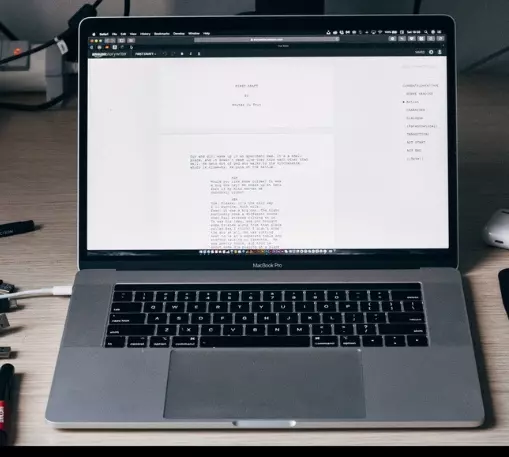
- What is the video’s purpose? What is the purpose of the video in the first place?
- Who is this video’s intended audience?
- What is the subject of our video? (The more precise you can be, the better.)
- What are the most important points to remember from the video?- What should viewers take away from it?
If the context had multiple characters, present their dialogues well in the essay to bring originality. If there is a need to involve another person, feel free to incorporate them.
How to Present a Video Essay Well in Class
- Write down keywords or main ideas in a notecard; do not write details- writing main ideas will help you remember your points when presenting. This helps you scan through your notecard for information.
- Practice- in presentations it is easy to tell who has practiced and who hasn’t. For your video essay to grab your class and professor’s attention, practice is the key. Practice in front of your friends and family asking for feedback and try to improve.
- Smile at your audience- this is one of the most important points when presenting anything in front of an audience. A smiley face draws the attention of the audience making them smile in return thus giving you confidence.
- Walk to your seat with a smile- try not to be disappointed even if you are not applauded. Be confident that you have aced your video presentation.
Other video presentations tips include;
- Making eye contact
- Have a good posture
- Do not argue with the audience
- Look at everyone around the room, not just one audience or one spot
- Rember to use your hand and facial expressions to make a point.

Joseph is a freelance journalist and a part-time writer with a particular interest in the gig economy. He writes about schooling, college life, and changing trends in education. When not writing, Joseph is hiking or playing chess.

- Scriptwriting
What is a Video Essay? The Art of the Video Analysis Essay
I n the era of the internet and Youtube, the video essay has become an increasingly popular means of expressing ideas and concepts. However, there is a bit of an enigma behind the construction of the video essay largely due to the vagueness of the term.
What defines a video analysis essay? What is a video essay supposed to be about? In this article, we’ll take a look at the foundation of these videos and the various ways writers and editors use them creatively. Let’s dive in.
Watch: Our Best Film Video Essays of the Year
Subscribe for more filmmaking videos like this.
What is a video essay?
First, let’s define video essay.
There is narrative film, documentary film, short films, and then there is the video essay. What is its role within the realm of visual media? Let’s begin with the video essay definition.
VIDEO ESSAY DEFINITION
A video essay is a video that analyzes a specific topic, theme, person or thesis. Because video essays are a rather new form, they can be difficult to define, but recognizable nonetheless. To put it simply, they are essays in video form that aim to persuade, educate, or critique.
These essays have become increasingly popular within the era of Youtube and with many creatives writing video essays on topics such as politics, music, film, and pop culture.
What is a video essay used for?
- To persuade an audience of a thesis
- To educate on a specific subject
- To analyze and/or critique
What is a video essay based on?
Establish a thesis.
Video analysis essays lack distinguished boundaries since there are countless topics a video essayist can tackle. Most essays, however, begin with a thesis.
How Christopher Nolan Elevates the Movie Montage • Video Analysis Essays
Good essays often have a point to make. This point, or thesis, should be at the heart of every video analysis essay and is what binds the video together.
Related Posts
- Stanley Kubrick Directing Style Explained →
- A Filmmaker’s Guide to Nolan’s Directing Style →
- How to Write a Voice Over Montage in a Script →
interviews in video essay
Utilize interviews.
A key determinant for the structure of an essay is the source of the ideas. A common source for this are interviews from experts in the field. These interviews can be cut and rearranged to support a thesis.
Roger Deakins on "Learning to Light" • Video Analysis Essays
Utilizing first hand interviews is a great way to utilize ethos into the rhetoric of a video. However, it can be limiting since you are given a limited amount to work with. Voice over scripts, however, can give you the room to say anything.
How to create the best video essays on Youtube
Write voice over scripts.
Voice over (VO) scripts allow video essayists to write out exactly what they want to say. This is one of the most common ways to structure a video analysis essay since it gives more freedom to the writer. It is also a great technique to use when taking on large topics.
In this video, it would have been difficult to explain every type of camera lens by cutting sound bites from interviews of filmmakers. A voice over script, on the other hand, allowed us to communicate information directly when and where we wanted to.
Ultimate Guide to Camera Lenses • Video essay examples
Some of the most famous video essayists like Every Frame a Painting and Nerdwriter1 utilize voice over to capitalize on their strength in writing video analysis essays. However, if you’re more of an editor than a writer, the next type of essay will be more up your alley.
Video analysis essay without a script
Edit a supercut.
Rather than leaning on interview sound bites or voice over, the supercut video depends more on editing. You might be thinking “What is a video essay without writing?” The beauty of the video essay is that the writing can be done throughout the editing. Supercuts create arguments or themes visually through specific sequences.
Another one of the great video essay channels, Screen Junkies, put together a supercut of the last decade in cinema. The video could be called a portrait of the last decade in cinema.
2010 - 2019: A Decade In Film • Best videos on Youtube
This video is rather general as it visually establishes the theme of art during a general time period. Other essays can be much more specific.
Critical essays
Video essays are a uniquely effective means of creating an argument. This is especially true in critical essays. This type of video critiques the facets of a specific topic.
In this video, by one of the best video essay channels, Every Frame a Painting, the topic of the film score is analyzed and critiqued — specifically temp film score.
Every Frame a Painting Marvel Symphonic Universe • Essay examples
Of course, not all essays critique the work of artists. Persuasion of an opinion is only one way to use the video form. Another popular use is to educate.
- The Different Types of Camera Lenses →
- Write and Create Professionally Formatted Screenplays →
- How to Create Unforgettable Film Moments with Music →
Video analysis essay
Visual analysis.
One of the biggest advantages that video analysis essays have over traditional, written essays is the use of visuals. The use of visuals has allowed video essayists to display the subject or work that they are analyzing. It has also allowed them to be more specific with what they are analyzing. Writing video essays entails structuring both words and visuals.
Take this video on There Will Be Blood for example. In a traditional, written essay, the writer would have had to first explain what occurs in the film then make their analysis and repeat.
This can be extremely inefficient and redundant. By analyzing the scene through a video, the points and lessons are much more clear and efficient.
There Will Be Blood • Subscribe on YouTube
Through these video analysis essays, the scene of a film becomes support for a claim rather than the topic of the essay.
Dissect an artist
Essays that focus on analysis do not always focus on a work of art. Oftentimes, they focus on the artist themself. In this type of essay, a thesis is typically made about an artist’s style or approach. The work of that artist is then used to support this thesis.
Nerdwriter1, one of the best video essays on Youtube, creates this type to analyze filmmakers, actors, photographers or in this case, iconic painters.
Caravaggio: Master Of Light • Best video essays on YouTube
In the world of film, the artist video analysis essay tends to cover auteur filmmakers. Auteur filmmakers tend to have distinct styles and repetitive techniques that many filmmakers learn from and use in their own work.
Stanley Kubrick is perhaps the most notable example. In this video, we analyze Kubrick’s best films and the techniques he uses that make so many of us drawn to his films.
Why We're Obsessed with Stanley Kubrick Movies • Video essay examples
Critical essays and analytical essays choose to focus on a piece of work or an artist. Essays that aim to educate, however, draw on various sources to teach technique and the purpose behind those techniques.
What is a video essay written about?
Historical analysis.
Another popular type of essay is historical analysis. Video analysis essays are a great medium to analyze the history of a specific topic. They are an opportunity for essayists to share their research as well as their opinion on history.
Our video on aspect ratio , for example, analyzes how aspect ratios began in cinema and how they continue to evolve. We also make and support the claim that the 2:1 aspect ratio is becoming increasingly popular among filmmakers.
Why More Directors are Switching to 18:9 • Video analysis essay
Analyzing the work of great artists inherently yields a lesson to be learned. Some essays teach more directly.
- Types of Camera Movements in Film Explained →
- What is Aspect Ratio? A Formula for Framing Success →
- Visualize your scenes with intuitive online shotlist software →
Writing video essays about technique
Teach technique.
Educational essays designed to teach are typically more direct. They tend to be more valuable for those looking to create art rather than solely analyze it.
In this video, we explain every type of camera movement and the storytelling value of each. Educational essays must be based on research, evidence, and facts rather than opinion.
Ultimate Guide to Camera Movement • Best video essays on YouTube
As you can see, there are many reasons why the video essay has become an increasingly popular means of communicating information. Its ability to use both sound and picture makes it efficient and effective. It also draws on the language of filmmaking to express ideas through editing. But it also gives writers the creative freedom they love.
Writing video essays is a new art form that many channels have set high standards for. What is a video essay supposed to be about? That’s up to you.
Organize Post Production Workflow
The quality of an essay largely depends on the quality of the edit. If editing is not your strong suit, check out our next article. We dive into tips and techniques that will help you organize your Post-Production workflow to edit like a pro.
Up Next: Post Production →
Showcase your vision with elegant shot lists and storyboards..
Create robust and customizable shot lists. Upload images to make storyboards and slideshows.
Learn More ➜
- Pricing & Plans
- Product Updates
- Featured On
- StudioBinder Partners
- The Ultimate Guide to Call Sheets (with FREE Call Sheet Template)
- How to Break Down a Script (with FREE Script Breakdown Sheet)
- The Only Shot List Template You Need — with Free Download
- Managing Your Film Budget Cashflow & PO Log (Free Template)
- A Better Film Crew List Template Booking Sheet
- Best Storyboard Softwares (with free Storyboard Templates)
- Movie Magic Scheduling
- Gorilla Software
- Storyboard That
A visual medium requires visual methods. Master the art of visual storytelling with our FREE video series on directing and filmmaking techniques.
We’re in a golden age of TV writing and development. More and more people are flocking to the small screen to find daily entertainment. So how can you break put from the pack and get your idea onto the small screen? We’re here to help.
- Making It: From Pre-Production to Screen
- Ethos, Pathos & Logos — Definition and Examples of Persuasive Advertising Techniques
- Ultimate AV Script Template to Write Better Ads [FREE AV Script Template]
- What is Dramatic Irony? Definition and Examples
- What is Situational Irony? Definition and Examples
- How to Write a Buzzworthy Explainer Video Script [Free Template]
- 100 Facebook
- 0 Pinterest

- WESTCHESTER CAMPUS
- Social Media Center
- Directories
Media Production and Film Studies
- Library Resources
- Finding Books
- Professional Organizations
- Careers in Media
- The Video Essay
So you want to make a video essay...
The video essay: how-to, featured video essays.
- Copyright & Fair Use
- Getting Help
Additional Resources
Academic Journals
- in[Transition] : The first open access, peer-reviewed journal on videographic criticism
- AUDIOVISUALCY: Videographic Film and Moving Image Studies : An online forum for video essays or works of audovisual screen studies that have an analytical, critical, reflexive or scholarly purpose; fully attribute all sources used; are made according to Fair Use principles; are non-commercial in nature.
Video Essay Channels
- Every Frame a Painting
- Indietrix Film Reviews
- 100 Years of Cinema
- Channel Criswell
- Lindsay Ellis
Library Guides
- Tufts University Library: Multimedia Production
- Edith Cowan University Library: The Video Essay
- Pace University Library: Film Criticism
What is a video essay ?
Christian Keathley, a Professor of Film & Media Culture at Middlebury College & co-founder of in[Transition], defines video essays as
“short critical essays on a given film or filmmaker, typically read in voice-over by the author and supplemented with carefully chosen and organized film clips”
Video essays have found incresased popularity in recent years on digital content sharing platforms like YouTube & Vimeo. Despite their scholarly-focused and argument-driven nature, video essays have since been associated with (and mistaken for) other popular forms of commentary (e.g. movie commentaries, reaction videos, online fan-edits, etc.) shared on the same platforms. The two do have similarities in their accessibility and utilize the same set of creative tools and texhniques. However, the video essay in its academic form does follow certain conventions (a written critical component from the author, scholarly research, and peer review), as opposed to popular commentaries.
Video essays as a medium are an important audivisual form of scholarship, particularly in terms of expression, creation, and accessibility. Traditional essays may not always lend themselves to the fullest expression of film and how we interpret/analyze visual images. As students of film and media studies, it is important to both understand the medium from a critical point of view, as well as from a creative point of view.
- Planning & Preparation
- Gathering Materials & Filming
- Editing & Sharing
- Understanding File Formats
So you've been assigned a video essay for class, or you want to make one on your own...
Where do you start? Like any other form of traditional essay, you will begin by Developing A Topic , whether it's a persuasive argument, a narrative story, or a research question. If you’re telling a story, think about good elements of narrative. If you’re making an argument in your video essay, think about the elements of making an effective argument. If you're drafting a research question, make sure to be specific and answer the following: who?, what?, where?, when?, why?, and how?
For more information about developing a topic or researcj question, please check out the following resources:
- Pace Library Guide: The Research Process, Step-By-Step
- Pace Library Guide: Getting Started with Research
Once you have a well-developed topic and/or research question, then you can Create an Outline and Write a Script for your video essay. Utilizing your background research, evidence from whichever piece(s) of media you are analyzing/discussing, and your own arguments/interpretations of that media, you can build an outline and write a basic script to refer to when filmming and/or recording your video essay. This script will especially be important if you plan to record a voiceover.
For more information about how to write a script/create an outline, please check out the following resources:
- Excelsior Online Writing Lab: Video Essays
- How To Make A Video Essay: Writing by Indietrix Film Reviews
Now, you've got your script and you're ready to start gathering materials (scenes, images, audio, etc.) to edit into your video essay. The best place to capture images is always from a high-resolution DVD, Blue-ray, or video file.
There are a couple of different places you can acquire these files. Of course, you can always invest in your own copies of the physical media. This is the best (and most ethical ) way to get high quality images, video, and footage.
Should you wish to do a screen capture, you can use platforms like Camtasia or Clip Converter to record images or footage directly from your screen. These aren't always the most ethical means to record footage, so if you choose to do so, be sure to consult Fair Use Guidelines before doing so. For this process, you will also likely need a DVD Drive, whether external or internal. Having one that can read DVDs and Blu-rays is a plus! Resoruces for how to do these technical processes are included below.
Before you actually aquire any footage or media for your video essay, it's important to weigh the ethical considerations (i.e. Fair Use & Copyright Law) no matter what the media is or your intention to use it.
Resources:
- How To Make A Video Essay: Footage and Voiceover from Indietrix Film Reviews
- How To Make Video Essays: This video is especially helpful in terms of the technology of filming and recording voiceovers for video essays, less so the other aspects of video essay production.
- Camtasia: Screen Capture & Recording Tutorials
As for finding stock photos or images to use that are in the Public Domain , check out this well-curated list of public domain image libraries, websites, and archives at the Tufts University Library Multimedia Production Resource Guide .
Use editing software and experiment with available functionality to enhance and support your argument. Add a voice-over, sound effects, music and other aspects of multimodality. Be sure to include references and credits to all sources used in creating the video essay.
For more information on editing video essays, please check out the following resources:
- How to Make a Video Essay: Editing by Indietrix Film Reviews
- Vimeo: Editing Basics
When creating, saving, uploading, and sharing video essays, it's important to have a basic understanding of digitail file formats, for videos, audio, and images.
Linked below are some resources (websites, videos, & infographics) to help you learn how to navigate each file format and learn their best uses. It's likely you'll become aware of and proficient at most of this as you move through your Film & Screen Studies coursework, so think of these resources as a brief introduction to the topic and/or as little reminders for you to refer to in the future.
Books:
- Portable Moving Images: A Media History of Storage Formats by Ricardo Cedeño Montaña
- Images on the Move: Materiality - Networks - Formats Editor: Olga Moskatova
Blog Posts:
- Understanding Video File Formats, Codecs and Containers by Andy Owen at TechSmith
- Video Formats – Meaning, types and everything you should know by Akeem Okunola at InEvent
- Image file formats: When to Use Each File Type by Samual Lundquist at 99Designs
Other Resources:
- Introduction to Digital Format Preservation, The Library of Congress

Image Credit: WonderShare, "Top 9 Video Formats You May Want to Know In 2023."
The Place of Voiceover in Academic Audiovisual Film and Television Criticism from Ian Garwood on Vimeo .
- << Previous: Media Literacy
- Next: Copyright & Fair Use >>
- Last Updated: Jun 27, 2024 6:07 PM
- URL: https://libguides.pace.edu/film_studies
- © Pace University
- Work at Pace
- Privacy Policy
We use cookies to improve your browsing experience and to personalise content for you. See our privacy and cookie policy .
Home Resources Free Guides Video Essays Guide How To Make Video Essays
VIDEO ESSAYS GUIDE
Introductory guide to video essays, how to make video essays, how to make video essays, there are already a number of very useful resources on how to make video essays, such as greer fyfe and miriam ross’s ‘ how-to video essays ’ (2015) and ‘teaching with video in the 21st century: clips, essays, full length films and tv programs’ (butler et al. 2015), both available in the audiovisual essay project in the reframe website..
Here, we further suggest a way of organising the production of video essays in three phases, preproduction, production and postproduction, in line with the broader filmmaking production process.

Pre-Production

Post-Production
Introduction to video essays, finding coherence across journals, how to make video essay guides, copyright considerations, dissemination.
Follow Polygon online:
- Follow Polygon on Facebook
- Follow Polygon on Youtube
- Follow Polygon on Instagram
Site search
- How to access the DLC
- What to do first
- Interactive map
- Walkthrough
- Scadutree Fragment locations
- DLC map fragments
- Boss locations
- Count Ymir questline
- Thioller and St. Trina questline
- All DLC guides
- Elden Ring DLC
- Zelda: Tears of the Kingdom
- Baldur’s Gate 3
- Elden Ring endings
- PlayStation
- Dungeons & Dragons
- Magic: The Gathering
- Board Games
- All Tabletop
- All Entertainment
- What to Watch
- What to Play
- Buyer’s Guides
- Really Bad Chess
- All Puzzles
Filed under:
- Entertainment
What it takes for video essayists to breakthrough on YouTube
Lindsay Ellis, Michael Tucker, T1J, Maggie Mae Fish, and Patrick Willems discuss the art of dissecting art
Share this story
- Share this on Facebook
- Share this on Reddit
- Share All sharing options
Share All sharing options for: What it takes for video essayists to breakthrough on YouTube
In the last 10 years, YouTube video essays — on movies, on TV shows, on games, on pop culture, on everyday life — have entered a renaissance. But how do you make a video essay? What does it take to run a YouTube channel that can let a creator’s creativity thrive and serve a demanding audience? How much do algorithms control the pop conversation, and how is someone supposed to break through?
Knowing that dissecting art is an art in itself, Polygon asked some of the top video essayists working on YouTube today to come together in conversation at the 2020 New York Comic Con Metaverse. On Saturday at 9 p.m. EDT/ 6 p.m. PDT, Lindsay Ellis , Michael Tucker ( Lessons from the Screenplay ), Kevin Peterson ( T1J ), and Maggie Mae Fish join moderator, fellow creator, and occasional Polygon contributor Patrick Willems to talk through their career arcs and reflect on what it takes to make a career out of video essays.
Want a taste?
“YouTube really encourages you to fixate on numbers and the algorithm,” Ellis says during the roundtable. “And the way the backend is set up [...] it’s designed to play to your anxiety and it’s designed to, like, make you freak out if your video isn’t doing as well as the last 10. I would like to be emotionally liberated from that because I do think it creatively stifles you. You’re making content based not on what you’re interested in, but what you think will get clicks. I wish I could just be OK with the fact that I’m not going to get a million views a video anymore. That should be OK. I should be allowed to do that.”
Watch the full, 45-minute panel above for even more insight and anecdotes.
Polygon at NYCC 2020
- For Mortal Kombat and Resident Evil director Paul W.S. Anderson, it’s all been leading to Monster Hunter
- Polygon is bringing exclusive programming to New York Comic Con 2020
- Polygon’s D&D session with Adult Swim’s Tigtone creators goes extremely weird
- Polygon asks: What’s up with the Fall Guys’ anatomy?
- Here’s the full NYCC 2020 line-up
- Milestone founders, Osamu Tezuka, and Jill Thompson to be inducted into Harvey Awards Hall of Fame
- Ready Player Two plot synopsis reveals ‘a last Easter egg’
- Kate Mulgrew to return as Captain Janeway in Star Trek: Prodigy
- The Walking Dead: World Beyond sets up challenges in Rick Grimes’ future return
- One story Rebecca Sugar couldn’t fit in Steven Universe or Future
- Exclusive: Archie Comics to partner with Webtoon for new online comics
- The Stand trailer brings Stephen King’s plague saga to terrifying life
- Neil Gaiman intends to adapt all of Sandman at Audible for the ‘comics impaired’
- A Lost sequel could work, say Damon Lindelof and Carlton Cuse, but not with them
- Stargirl season 2 promises big answers and more classic villains
- The Animaniacs return in their first new parody in years
- The Expanse season 5 trailer is here
- First look at Amazon’s next big superhero series, Invincible
- Hulu’s MODOK looks like Marvel by way of Robot Chicken
- Wolfwalkers trailer shows off the film’s gorgeous animation
- Watch Polygon’s new look at the characters and lore behind Star Wars: The High Republic
- Inside the ‘great disaster’ that kicks off Star Wars’ new pre-Empire era
- Star Wars’ new Wookiee Jedi carries a Wookiee-sized lightsaber
- See new pages of Marvel Comics’ Star Wars: The High Republic comic
- Can The Stand reimagine itself in an apocalyptic year?
- The Watch has its own take on Terry Pratchett’s beloved Discworld series
- Stormfront actress Aya Cash reflects on inhabiting modern Nazism on The Boys
- Norman Reedus and Melissa McBride tease The Walking Dead Daryl and Carol spinoff
- Where The Boys goes after season 2
- Star Trek: Discovery readies to go beyond canon, while paying respect to the past
- Evil season 2 will take on the show’s big mystery, according to the cast
- World of Tomorrow 3 is an epic about star-crossed lovers who haven’t quite met yet
- What’s next for Walking Dead? More of Telltale’s Clementine, says Robert Kirkman
- Locke & Key is going to Sandman’s Hell in its first ‘and probably last’ big crossover
- New Demon Slayer movie details, U.S. release date plans revealed at NYCC 2020
- Dark Nights Metal’s Scott Snyder wants to make the DC Universe matter again
- Riverdale is in a position to rethink color-blind casting of comic characters
- Avatar: The Last Airbender’s use of martial arts went deeper than fight scenes
- Viz Media to make the Inuyasha manga available digitally before the Inuyasha sequel
- The Smallville cast shares secrets and regrets from the 10-season run
The next level of puzzles.
Take a break from your day by playing a puzzle or two! We’ve got SpellTower, Typeshift, crosswords, and more.
Sign up for the newsletter Shopkeeper
We deliver the best gaming deals to your inbox for the perfect price: free
Just one more thing!
Please check your email to find a confirmation email, and follow the steps to confirm your humanity.
Oops. Something went wrong. Please enter a valid email and try again.
How to do a Video Essay: What is a Video Essay?
Introducing the Video Essay: Assignment of Now!

- What is a Video Essay?
The term Video Essay is hard to define as it is still evolving from a long cinematic history. From the screen studies perspective, it is a video that analyses specific topics or themes relating to film and television and is relevant as it comments on film in its own language. On a basic level it could be defined as the video equivalent of the written essay.
This guide refers to the video essay from the context of the academic audiovisual essay as a multimodal form that combines written, audio and visual modes to communicate an idea. As a structure, the video essay is thesis-driven, and uses images with text so that the audience can read and interpret the idea or argument in a multimodal way.
In educational settings, the term video essay is used broadly for teacher/student-learner generated video and as a vehicle to transmediate between written-text to digital forms. Through the video essay form, students are able to achieve learning outcomes in a new way as a multimodal experience while engaging with the subject, task or assessment through expression and creation of self-knowledge.
PHOTO: TWITTER/@GIZMODO. Retrieved from http://www.straitstimes.com/tech/death-of-the-vcr-5-things-to-remember-about-the-iconic-technology
- << Previous: Home
- Next: The Video Essay Process >>
- The Video Essay Process
- Modes, MultiModality & Multiliteracies
- A Pedagogy of Multiliteracies
- Modes Of Multimodality
- Video Essay Journals
- Video Essay Channels
- Weblinks to Video Essay Resources
- Weblinks to Creative Commons Resources
- Titles in the Library
- Referencing & Copyright
- Marking Rubric
- Last Updated: Aug 28, 2023 2:57 PM
- URL: https://ecu.au.libguides.com/video-essay
Edith Cowan University acknowledges and respects the Noongar people, who are the traditional custodians of the land upon which its campuses stand and its programs operate. In particular ECU pays its respects to the Elders, past and present, of the Noongar people, and embrace their culture, wisdom and knowledge.

POSTS BY TOPIC
- ABOUT MFE PROGRAM

MASTER OF FINANCIAL ENGINEERING PROGRAM
Berkeley mfe blog, how to prepare for the video essay.
By The Berkeley MFE Program | Jun 22, 2022 | Applying , STEM , Data Science , MFE , quant finance , graduate studies , video essay
It is important that we are able to hear and see you. Before you start recording, make sure you are in a quiet space with good lighting. In orde r to minimize distractions, please have a neutral background that isn’t busy with objects or bright colors.
You want to make sure you are in a well lit room. If possible, we recommend recording during the day with natural light. If your space has a window directly behind you, ensure that the shades or curtains are closed.
Check the quality of the device you are recording on. Make sure that your face is fully in frame and visible, and that your audio is clear. You will have an opportunity to do a test before you begin the recording, be sure to take advantage of this opportunity.
You have two attempts to record your video, so make sure beforehand that you are in an area with stable Internet connection. Since you will record the video essay directly in the application portal. We encourage you to check your internet speed and that your video will upload properly at the end of your recording. You can use an online speed test to check your speed.
We all know that the first impression is usually the most important. The video essay may be the only time the admissions committee will see and hear you, so take the time to ensure you are well dressed and groomed.
The essay question(s) will not be available beforehand. While you will not be able to prepare in advance, we recommend preparing yourself mentally: take deep breaths, go out for a walk, hydrate, etc. Do what you need to get in the right mind set. When you are ready and completed the video and audio check, the question(s) will appear on screen when you hit “Ready.” We have designed the question(s) to be answered it on the spot and you will have a few seconds to read the prompt before the recording begins.
You only have two minutes to answer the prompt. Make sure to pay attention to the time and start wrapping up before time runs out. Once you completed the recording, take a few minutes to review your response. Utilize the second attempt if needed. If you decide to record your response using the second att empt, we strongly advise that you do not read your answer or look it up on the internet. Use your own words, be yourself and talk to us as if you were sitting across from us during an interview. This is not a pass or fail exercise. We want to hear from you, your opinion, and what you have to say on this subject.
We hope these tips will help you feel more confident and ready for the video portion. If you have not already done so, we encourage you review the application tips . If you still have questions or need additional guidance, here are ways to connect or learn more: sign-up for an information session or join the weekly Q&A session via zoom on Tuesdays from 3-4 PM PT/Wednesday from 9-10 AM PT.

About The Author
The Berkeley Master of Financial Engineering Program, a STEM designated degree, provides you with the knowledge and skills to prepare you for a career in the finance/fintech industry.

- Finance (30)
- MFE Alumni (21)
- Applying (19)
RECENT ARTICLES
Popular articles.
Copyright © 1996-2024 | University of California, Berkeley | Haas School of Business | Privacy Policy


Visual Rhetoric
Video essay resource guide.
PAR 102 (M-Th, 9 AM- 5 PM) Fine Arts Library Media Lab (same hours as FAL) PCL Media Lab (same hours as PCL)
About video essays
What are they.
“The video essay is often described as a form of new media, but the basic principles are as old as rhetoric: the author makes an assertion, then presents evidence to back up his claim. Of course it was always possible for film critics to do this in print, and they’ve been doing it for over 100 years, following more or less the same template that one would use while writing about any art form: state your thesis or opinion, then back it with examples. In college, I was assured that in its heart, all written criticism was essentially the same – that in terms of rhetorical construction, book reviews, music reviews, dance reviews and film reviews were cut from the same cloth, but tailored to suit the specific properties of the medium being described, with greater emphasis given to form or content depending on the author’s goals and the reader’s presumed interest.”
Matt Zoller Seitz on the video essay .
what makes a good video essay?
Tony Zhou on how to structure a video essay
Kevin B. Lee on what makes a video essay “ great “
why should we use them? what are their limits?
Kevin B. Lee’s experimental/artistic pitch for video essays
Kevin B. Lee’s mainstream pitch for video essay
“Of all the many developments in the short history of film criticism and scholarship, the video essay has the greatest potential to challenge the now historically located text-based dominance of the appraisal and interpretation of film and its contextual cultures…”
Andrew McWhirter argues that t he video essay has significant academic potential in the Fall 2015 issue of Screen
“Importantly, the [new] media stylo does not replace traditional scholarship. This is a new practice beyond traditional scholarship. So how does critical media differ from traditional scholarship and what advantages does it offer? First, as you will see with the works in this issue, critical media demonstrates a shift in rhetorical mode. The traditional essay is argumentative-thesis, evidence, conclusion. Traditional scholarship aspires to exhaustion, to be the definitive, end-all-be-all, last word on a particular subject. The media stylo, by contrast, suggests possibilities-it is not the end of scholarly inquiry; it is the beginning. It explores and experiments and is designed just as much to inspire as to convince…”
Eric Fadden’s “ A Manifesto for Critical Media “
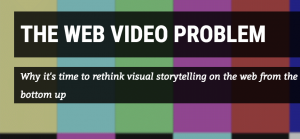
Adam Westbrook’s “ The Web-Video Problem: Why It’s Time to Rethinking Visual Storytelling from the Bottom Up “
Video essayists and venues
Matt Zoller Seitz (various venues) A writer and director by trade, Zoller Seitz is nonetheless probably best known as a prominent American cultural critic. He’s made over 1000 hours of video essays and is generally recognized as a founder of the video essay movement in high-brow periodicals. A recognized expert on Wes Anderson, Zoller Seitz is also notable because he often mixes other cinematic media (especially television) into his analysis, as in the above example, which doubles as an experiment in the absence of voiceover.

Various contributors, Press Play Co-founded by Matt Zoller Seitz and Ken Cancelosi, Press Play (published by Indiewire) is one of the oldest high-brow venues for video essays about television, cinema, and other aspects of popular culture.
Various contributors, Keyframe (A Fandor online publication) Fandor’s video essay department publishes work from many editors (what many video essayists call themselves) on and in a range of topics and styles. Check it out to get an idea of all that things a video essay can do!

Various contributors, Moving Image Source A high-brow publication for video essays.
Tony Zhou, Every Frame a Painting The master of video essays on filmic form, Tony’s arguments are clean, simple, and well-evidenced. Look to Tony as an example of aggressive and precise editing and arrangement. He’s also an excellent sound editor–pay attention to his choices and try out some of his sound-mixing techniques in your essay.
Adam Johnston, Your Movie Sucks (YMS) Although an excellent example of epideictic film rhetoric, this channel is a great example of what not to do in this assignment (write a movie review, gush about how good/bad you think a movie is, focus on motifs or narrative content instead of film form as the center of your argument). What you can learn from Adam is a lot about style. Adam’s delivery, pacing, and editing all work together to promote a mildly-disinterested-and-therefore-credible ethos through a near-monotone, which I’ll affectionately dub the “Daria” narratorial ethos.
Adam Westbrook, delve.tv Adam Westbrook is part of an emerging group of professional video essayists and delve.tv is his version of a visual podcast. Using the video essay form, Adam has developed a professional public intellectual ethos for himself through skillful overlay of explanation/interpretation and concept. Check out Westbrook’s work as a really good example of presenting and representing visual concepts crucial to an argument. He’s a master at making an argument in the form of storytelling, and he uses the video essay as a vehicle for that enterprise.
:: kogonada (various venues) If you found yourself wondering what the auteur video essay might look like, :: kogonada is it. I like to call this “expressionist” video essay style. Kogonada is the ultimate minimalist when it comes to voiceover/text over–its message impossibly and almost excessively efficient. Half of the videos in his library are simple, expertly-executed supercuts , highlighting how heavily video essays rely on the “supercut” technique to make an argument. Crafting an essay in this style really limits your audience and may not be a very good fit for the constraints of assignment (very “cutting edge,” as we talked about it in class), but you will probably draw inspiration from ::kogonada’s distinct, recognizable style, as well as an idea of what a video essay can do at the outer limits of its form.
Lewis Bond, Channel Criswell Narrating in brogue-y Northern English, Bond takes his time, releasing a very carefully-edited, high-production video essay once every couple of months. He’s a decent editor, but I feel his essays tend to run long, and I feel rushed by his narration at times. Bond also makes a useful distinction between video essays and analysis/reviews on his channel–and while most of his analysis/reviews focus on film content (what you don’t want to imitate), his video essays stay pretty focused on film technique (what you do). Hearing the same author consciously engage in two different modes of analysis might help you better understand the distinction between the two, as well.
Jack Nugent, Now You See It Nugent’s brisk, formal analysis is both insightful and accessible–a good example of what it takes to secure a significant following in the highly-competitive Youtube marketplace. [That’s my way of slyly calling him commercial.] Nugent is especially good at pairing his narration with his images. Concentrate and reflect upon his simple pairings as you watch–how does Nugent help you process both sets of information at the pacing he sets?
Evan Puschak, The Nerdwriter Nerdwriter is a great example the diversity of topics a video essay can be used to craft an argument about. Every week, Puschak publishes an episode on science, art, and culture. Look at all the different things Puschak considers visual rhetoric and think about how he’s using the video essay form to make honed, precisely-executed arguments about popular culture.
Dennis Hartwig and John P. Hess, FilmmakerIQ Hartwig and Hess use video essays to explain filmmaking technique to aspiring filmmakers. I’ve included the channel here as another example of what not to do in your argument, although perhaps some of the technical explanations that Hartwig and Hess have produced might help you as secondary sources. Your target audience (someone familiar on basic film theory trying to better understand film form) is likely to find the highly technical, prescriptive arguments on FilmIQ boring or alienating. Don’t focus on technical production in your essay (how the film accomplishes a particular visual technique using a camera); rather, focus on how the audience interprets the end result in the film itself; in other words, focus on choices the audience can notice and interpret–how is the audience interpreting the product of production? How often is the audience thinking about/noticing production in that process?
Kevin B. Lee (various venues) A good example of the older, high-brow generation of video essayists, Kevin’s collection of work hosted on his Vimeo channel offers slow, deliberate, lecture-inspired readings of film techniques and form. Note the distinct stylistic difference between Kevin’s pacing and someone like Zhou or Lewis. How does delivery affect reception?
Software Guides
How to access Lynda tutorials (these will change your life)
Handbrake and MakeMKV (file converters)
Adobe Premiere (video editing)
Camtasia (screen capture)
File management
Use your free UTBox account to upload and manage your files. Make sure you’ve got some sort of system for tracking and assembling everything into your video editing software. UTBox has a 2 terabyte limit (much higher than Google Drive) and is an excellent file management resource for all sorts of academic work.
Adobe Premiere saves versions with links to your video files, so it’s imperative that you keep your video files folder in the same place on every machine you open it up on. That’s why I keep all my video files in a big folder on box that I drop on the desktop of any machine I’m working on before I open my premiere files. The Adobe Premiere project walkthrough has more details on this.
Where to find video and how to capture it
About fair use . Make sure your composition complies with the Fair Use doctrine and familiarize yourself with the four criteria.
The best place to capture images is always from a high-resolution DVD or video file . The first place you should go to get the film is the library– see instructions for searching here .
To import the video and audio from your DVD or video file into your video editing software (like Premiere), you will first need to use a software to convert it to an .mkv. See instructions on how to do that here .
Camtasia tutorials . Camtasia is a program that allows you to capture anything that’s going on on your screen . This is a critical tool for this assignment as you decide what kind of interface you want to present to your reader in your video essay. Camtasia also allows you to capture any high-quality video playing on your desktop without licensing restrictions.
You can also use Clip Converter to capture images and sound from pre-existing YouTube videos , and it may be a little faster and easier than Camtasia. I suggest converting things into .mkv before putting them into your video editor, regardless of where you get the material from.
Film theory and criticism
- /r/truefilm’s reading and viewing guide
Leave a Reply Cancel reply
You must be logged in to post a comment.

The Audiovisual Essay
Practice and Theory in Videographic Film and Moving Image Studies
HOW-TO VIDEO ESSAYS by Greer Fyfe and Miriam Ross
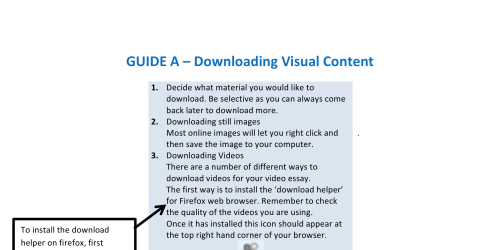
HOW-TO VIDEO ESSAYS
By Greer Fyfe and Miriam Ross
If you have never done any video work before it may seem intimidating at first but you will find it easier than you think if you work through the following steps. Seek help if you get stuck (Google is often a quick solution).
Getting started
- Ideally just one sentence;
- Write this down, keep referring to it and don’t be afraid of modifying it as you go through the whole process.
- voice-over ( https://vimeo.com/96558506 )?
- text+image ( http://vimeo.com/28201216 )?
- supercut ( https://vimeo.com/88077122 )?
- Don’t try to create something too complicated. Start with simple ideas and gather limited material at the beginning until you are confident that you can add more.
- https://www.youtube.com/watch?v=o47Lr9GXEnI
- https://vimeo.com/album/3198467
- http://vimeo.com/groups/essay
- http://framescinemajournal.com/article/video-essays-in-the-cinema-history-classroom/
- http://festivalists.com/post/110533801961/videoessay
- http://mediacommons.futureofthebook.org/intransition/
- https://reframe.sussex.ac.uk/audiovisualessay/
Collecting material
- Remember not to go overboard at the beginning as it is easy to download multiple files. Think about what you need to start the project and add more later.
- There are some online guides to ripping DVDs using readily available software: http://lifehacker.com/380702/five-best-dvd-ripping-tools ; http://www.howtogeek.com/howto/2696/how-to-rip-dvds-with-vlc/
- This can be a tricky area, particularly as some DVDs with greater level of encryption might be harder to rip than others. If you are not confident in this area stick to the other options for gathering material.
- Try to cut down ripped files into sections that you will need. If not you will be working with very big files that may overload your editing software.
- If you can play a film on your computer then you can grab still images from it.
- On a PC. Press PrtScn and then find somewhere you want to paste the image (ie. image editing software). Press Ctrl+V. If you have captured the whole computer screen you may need to crop the image.
- On a Mac. Press Command+Shift+3. This will save the image to your desktop. If you have captured the whole computer screen you may need to crop the image.
- If you don’t have a microphone available, look at your phones and your computer to see if they have a voice/sound recording option.
- Think about who will provide the voice. Make sure whoever does so is comfortable with their voice being used in this way.
- One DIY solution is to use your phone to film material when it plays on a TV or other device. This will create low quality images but is an option if all else fails.
- Use your academic skills to find quotes, factual statements and citations you might incorporate
- Although the footage and images you are working with don’t have to be HD, they should be clearly visible when blown up to full screen size
- When working in groups decide who is gathering what material and make sure this workload is distributed evenly.
- Some of this material will take up a lot of space. Make sure you have designated folders available, that you label your material carefully so you know what it is and that you have a plan for backing-up this work.
Editing material
- If you have not used this editing software before, familiarise yourself with it and do a short practice run.
- If you are familiar with other editing software you can use it.
- Feel free to experiment with split screens, diagrams and text but don’t over do it.
- If you are including a voice over you will need to decide if you do the voice over first and edit the visual material to match the voice over or if you organise the visual material first and then create a voice-over to match it. Neither way is better than the other and there will be some to and fro between the two options.
- Include a bibliography/filmography of sources used at the end of the video
- If this is an academic piece that will be assessed in an academic context aim for a formal rather than colloquial/funny style.
Post-first draft
- Add colour filters
- Swap a voice-over for text screens and vice-versa
- Return to your original argument. Have you made a clear and obvious argument in the video essay?
- Test playback. Check the video will play okay on different computers/television screens.
The How-to Guides as PDFs
- GUIDE A: Downloading Audiovisual Content
- GUIDE B: Editing your Own Content
- GUIDE C: Creating a Mash Up
- GUIDE D: Sharing your Work
- GUIDE E: Extra Software
- How-to Video Essays [as PDF]
Copyright information
The above and linked to information, where it pertains to the use of copyright material, is shared under the understanding that Fair Use or Fair Dealing legal exceptions are generally established—for educational, critical and private research purposes—in many, if not all, national jurisdictions. These exceptions have also been supported and successfully defended by a number of prominent professional academic associations including the Society for Cinema and Media Studies . Readers or users of this information will need to ensure for themselves that they obey the laws of the legal territories in which they live. Neither the authors nor REFRAME , University of Sussex, will accept any liability for actions readers or users freely choose to take.
The authors and copyright holders of the above text and linked PDFs— Greer Fyfe and Miriam Ross —have shared their work under a Creative Commons Attribution-ShareAlike licence. CC BY-SA. February 2015.
- TEXT: Greer Fyfe and Miriam Ross
- GUIDE Design: Greer Fyfe
Biographical Note
Miriam Ross is Senior Lecturer in the Film Programme at Victoria University of Wellington. She is the author of South American Cinematic Culture: Policy, Production, Distribution and Exhibition (2010) and 3D Cinema: Optical Illusions and Tactile Experiences (2015).
Greer Fyfe is a Research Assistant at Victoria University of Wellington.
Share this:
- Promo Video
- Real Estate Video
- Corporate Video
- Trailer Video
- Tutorial Video
- Birthday Video
- Wedding Video
- Memorial Video
- Anniversary Video
- Music Video
- Travel Video
- Social Media
- YouTube Video
- Facebook Video
- Instagram Video
- Twitter Video
- TikTok Video
- YouTube Intro Video
Generate videos from your prompt, article, or URL
Generate scripts for any purpose
Paste the URL and turn your blog post into compelling videos with AI
Generate images in various styles
Turn text into natural-sounding voices
Create multi-language videos with ease
Generate subtitles or captions for your video automatically
Remove background from images automatically with one click
- Video Compressor
- Video Converter
- Video Trimmer
- Video Merger
- Frame Video
- Reverse Video
- Video Effects
- Screen Recorder
- Freeze Frame
- Video Collage
- Speed Curve
- Add Text to Video
- Text Animations
- Add Subtitle to Video
- Add Text to GIF
- Video to Text
- Audio to Text
- Audio Editor
- Audio Cutter
- Audio Converter
- Audio Joiner
- Add Music to Video
- Ringtone Maker
- Slideshow Maker
- Meme Generator
- Transparent Image Maker
- Photo Frame
- YouTube Thumbnail Maker
- Video Editing
- AI Video Creator
- Video Editing Tips
- Video Creation
- Best Video Editors
- Video Recording
- Video Capturing
- Best Video Recorders
- Video Marketing
- Video Marketing Tips
- Marketing Video Creation
- Video Conversion
- Video Format Conversion
- 5 Easy Steps to Create an Eye-Catching Video Essay
- Video Creation >
Unlike traditional essays, video essays combine visuals, audio, text to analyze or explain a certain topic. Educators use it to break down complex subjects so that students can perform better in classes. Students use it to apply for college. Content creators use this type of video to influence public opinion or raise awareness about important issues.
Video essays are more common than you thought. Also, you don’t even need fancy video editing software or invest a large sum of money to create one. In the following parts, we will be showing you one easiest and most effective ways to a satisfying video essay.
Video Essay Examples
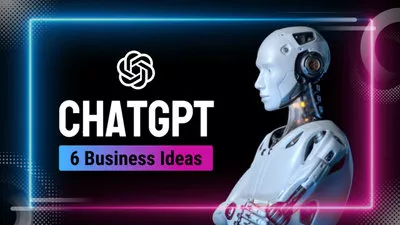
Part 1. The Video Essay Maker We Need
AI tools are changing the way we live, and AI video editors are making video essay creation easier than ever! FlexClip is one of them. It can automatically generate a video essay based on the prompt or essay text you enter.
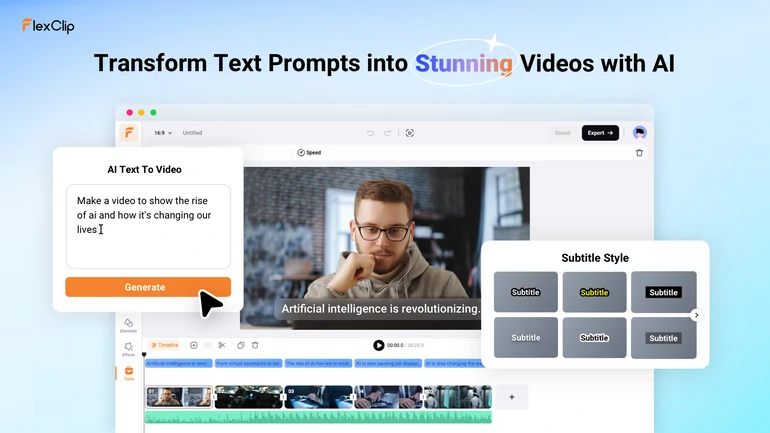
FlexClip Text to Video Overview
Here are more FlexClip can help out:
- Generate excellent text essays with ChatGPT. Tell FlexClip the theme of the video essay, you will get the best-ever AI essay script perfect for video creation.
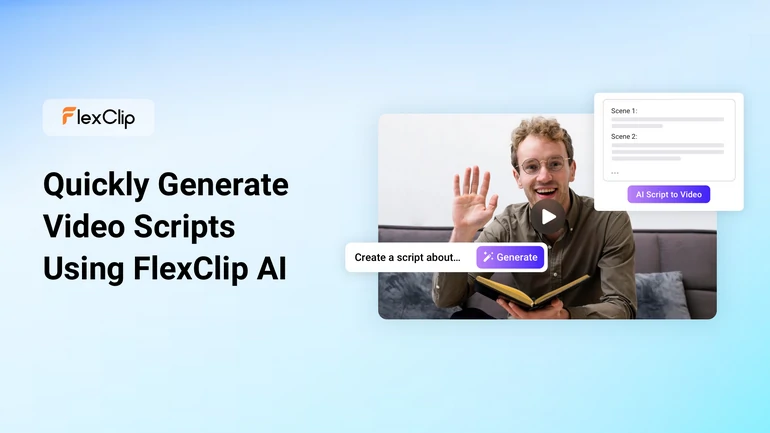
FlexClip Script Writer Overview
- Farewell to robotic AI voiceover. FlexClip’s AI text-to-speech tool reads out anything for you in a natural, melodious voice. 140+ language support, and 400 voices will certainly meet all your needs.
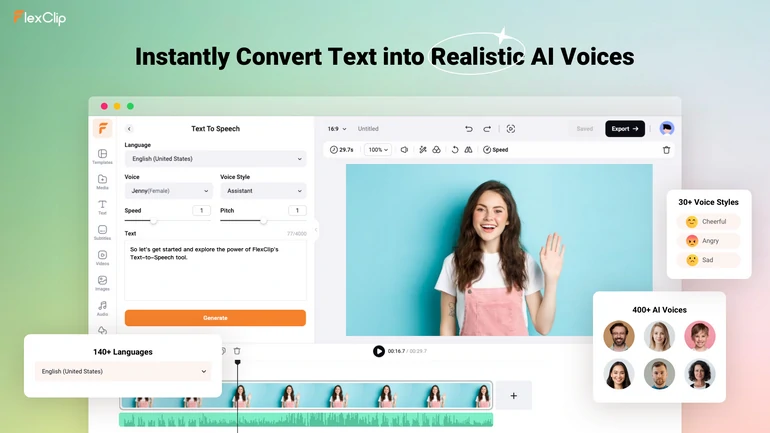
FlexClip Text to Speech Overview
- Authentically translate your video subtitle or voiceover into 60+ languages. Make your video go global and reach more audiences!
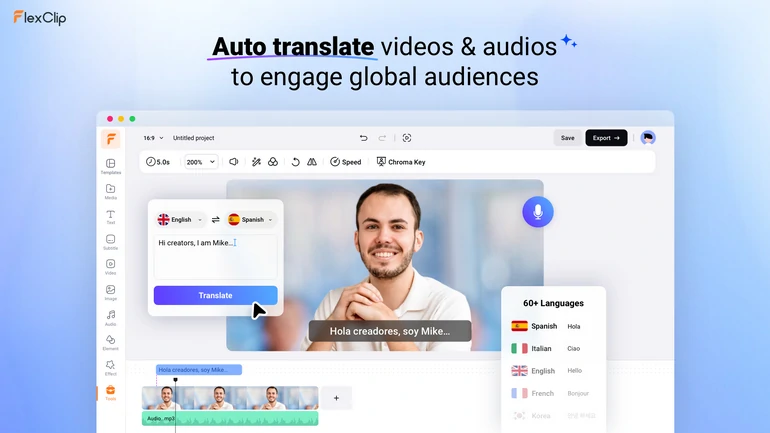
FlexClip Video Translate Overview
- Tons of video essay templates designed by professionals are ready to be edited and personalized. Go to FlexClip’s template page and get more inspiration.

5 Easy Steps to Make a Video Essay
If you are at FlexClip’s editing page, you are only 5 steps away from a satisfying video essay. Let’s get started now!
Step 1. Preparation
Getting organized always makes you more effective, the same applies to video essay creation. You need to put all media resources like music, photos, video clips in one folder.
Do remember to summarize your text essay into a bullet list. Anyway, video essays are not all about details, but about making ideas more digestible.
Next up, visit FlexClip’s media section, click on the Upload files button, and follow the prompt to upload all photos, videos, music from a local folder, cloud services, and mobile device needed for video essay creation.
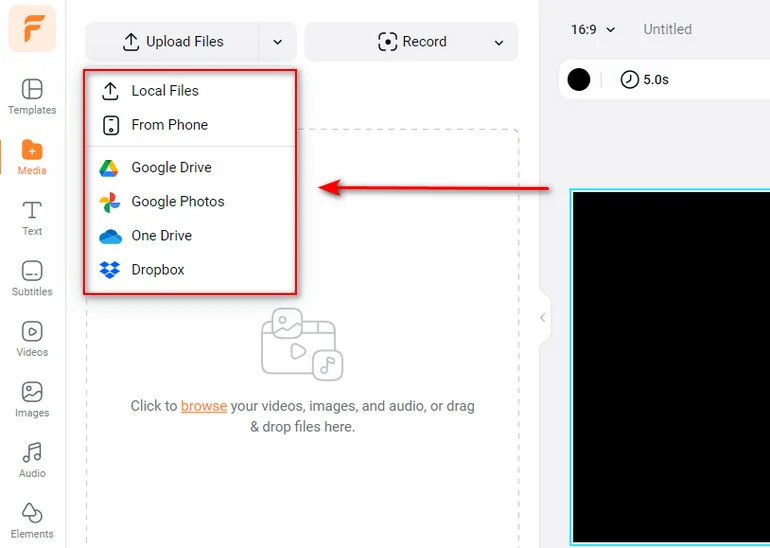
Upload Resources to FlexClip
Step 2. Generate a Video Essay Draft
Once you input your text essay, FlexClip can understand the content, match the content with resources from the stock library, and then use them to create a slideshow. AI will add transitions and filters to those media resources to make everything go smoothly.
Go to Tools > AI Video Generator. Here you can enter a prompt to generate a video, or generate videos from an article or URL. Copy the article content or blog URL to FlexClip, select the subtitle style and hit Generate.
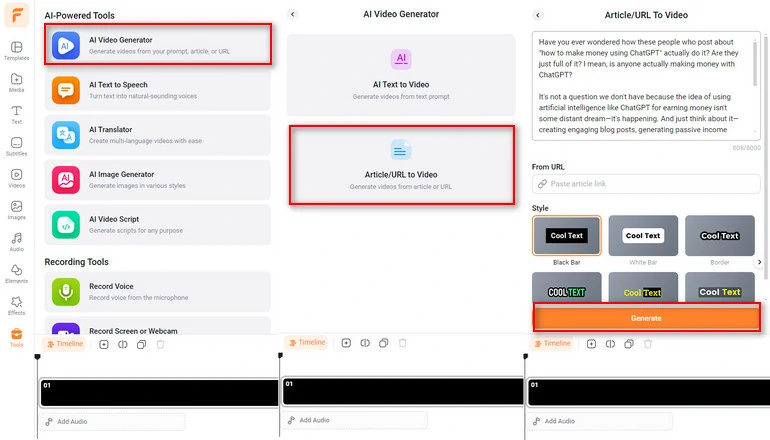
Generate a Video with Text
FlexClip will automatically find the key sentences from the article and match them with media resources. You can deselect or re-select the key sentences, replace the resources, adjust the duration, even manually edit the subtitle content. Hit Add to Timeline to confirm all changes.
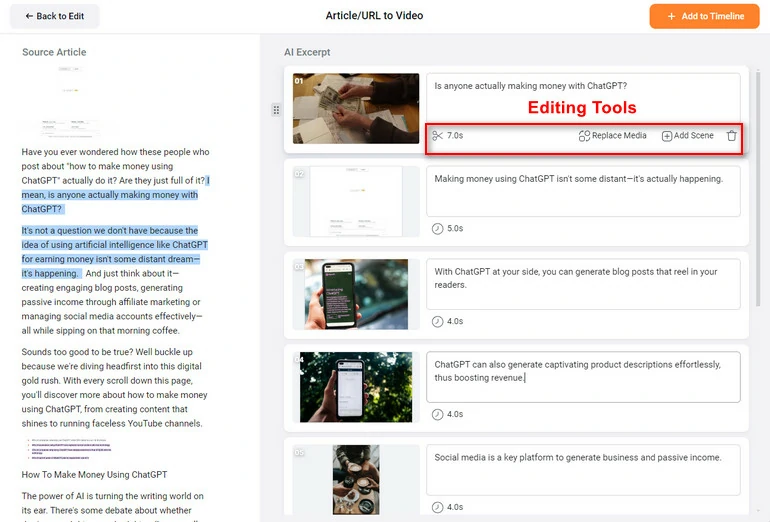
Finish Video Essay Draft
Step 3. Edit the Video Essay
As we mentioned earlier, the AI text-to-video tool only creates a draft video essay. To make your video essay outstanding, you have to make some manual edits. Here are some ideas to edit your video essay.
Click on any item on the scene, all available editing tools will pop up above the preview window. The most frequently used tools include cropping, speed changer, filters, chroma key.
Instead, move to the text section to add more information, find the right background music to replace, or go to the Elements section to enrich your video essay with stickers, interesting GIFs, widgets, etc. All resources are listed on the left-side panel. Feel free to explore.
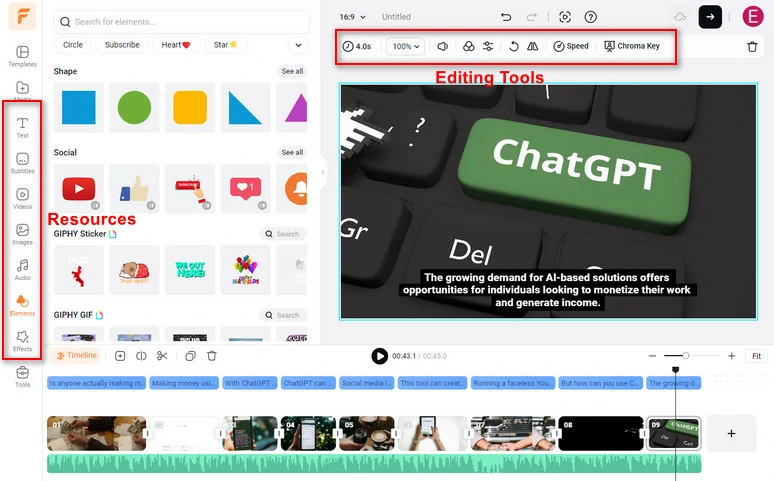
Edit Video Essay
Step 4. Add More AI Touches
Voiceover is an essential part of the video essay. You can record your own voice, but why not grab a cup of coffee and let AI do the job? Select the language, choose a voice, and the voice style you love, set up the speed and pitch, you will soon get a natural AI voiceover.
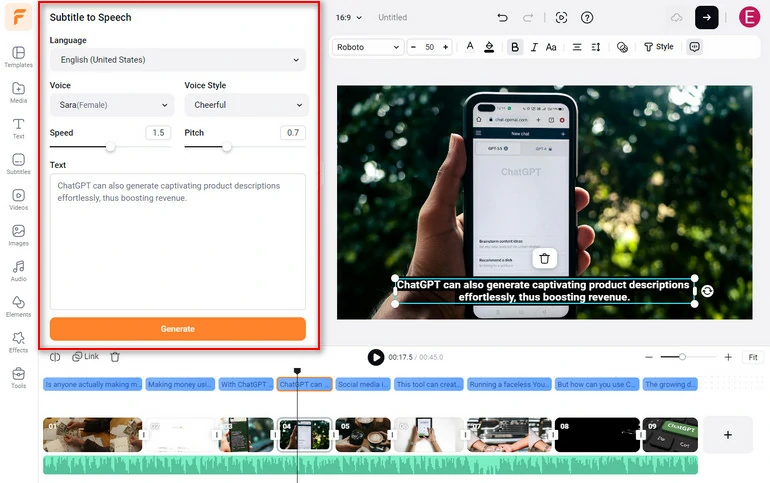
Generate AI Voiceover
Make your video essay go global with authentic translation! FlexClip can help you translate video essay subtitles, translate video audio to audio, and even project text into 60 more languages. Select the target language and let translation begin.
Generate AI Translation
Step 5. Export & Share
Enjoy the ultimate freedom of sharing your video essay at FlexClip. Besides directly downloading to your computer, you can also save the video to cloud services, share the video via a short link, or one-click post to YouTube, TikTok.
Tips for Creating an Excellent Video Essay
Never created one video essay before? Following are 3 must-read tips for making excellent video essays.
- Write Eye-Catching & Strong Video Script
The script is the backbone of your video essay. You should pick a nice topic to make sure you have enough potential viewers, and do thorough research so that your script is trustworthy.
Start with a hook to grab your audience’s attention. Use storytelling techniques and concise sentences to keep them engaged throughout the video.
- High-Quality Footage and Images
Incorporate relevant and high-quality visuals that complement your script. Use original footage, stock footage, and public domain images where applicable at least in 1080P.
Most people will ignore the sound quality. Invest in a quiet environment and a good microphone to minimize background noise. Also, edit your audio to remove any mistakes and pauses.
- Edit for Pacing and Clarity
Edit your video essay to maintain a good pace and ensure clarity. Avoid long, unbroken segments of talking. Instead, use cuts, transitions, and visual changes to keep the audience engaged. You can also edit the video to the music beat.
Frequently Asked Questions
1. what’s the difference between vlog and video essay.
Vlogs are videos showcasing someone’s daily life. Video essays are more like essays in video form. They are used to convey excellent messages and spread information.
2. Can I monetize my video essays?
Yes, you can monetize your video essay through platforms like YouTube by enabling ads, partner programs, offering premium content. Please refer to the social platform’s monetizing policies and guidelines.
3. How do I write a script for a video essay?
Writing a script for a video essay involves extracting the main points from the essay and making it more like spoken sentences. Please keep in mind that the text should accompany the voiceover.

Member of PearlMountain Limited. Has a mania for video editing. Love to share photo/video shooting tips and ideas.
FlexClip Video Maker
The easiest way to help you create custom videos, no design skills needed.
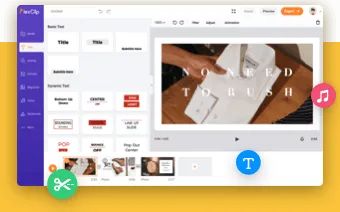
Hot & Trending
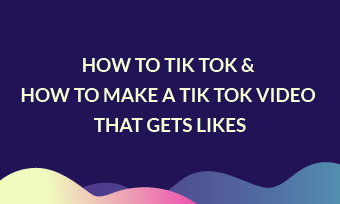
Ultimate Tik Tok Guide – How to Tik Tok & How to Make a Tik Tok Video that Gets Likes
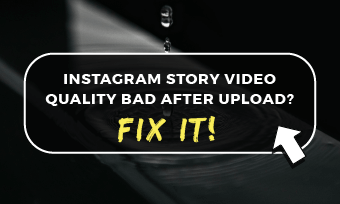
Instagram Story Video Quality Bad After Upload? Fix It!

How to Repost Video on TikTok & How to Remove TikTok Repost
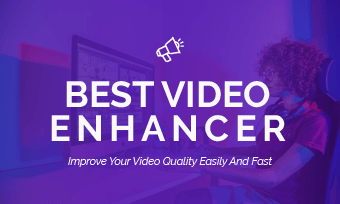
Improve Video Quality Online: 3 AI Video Quality Enhancers You Can't Miss

4K Convert to HD 1080p without Watermark: Best 4k Video Converters [Win/Mac/Online]

How to Change Face in Video on Phone/Desktop/Online
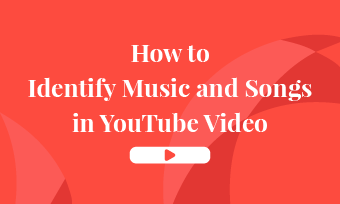
7 Best Ways to Find Music in YouTube Videos
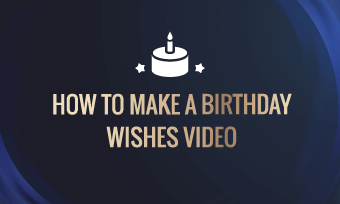
Top 13 Birthday Video Makers with Music and Effects Free
You May Also Be Interested

5 Video Compressor for WhatsApp: Compress & Reduce Videos Size for WhatsApp

Time Photos on TikTok: How to Edit Duration of Photos on TikTok on Phone


4 Easy Steps On How To Make A Video Essay
Just like photo essays and traditional essays, video essays tell a story or make a point. The only difference is that it presents the information or story in video form.
However, how to make a video essay is a general question in today’s time. As the development of technology and easy access to the internet has changed the traditional method of narrating a story through written essays has to be video essays. It is quite easy to connect with people through videos as compared to written essays as you can attract them in both express and implied ways. It has risen as an effective and efficient mode of presenting the information.
Thus, this blog will help you understand how to make a video essay proficiently and the significance of making such an essay. Let’s start by discussing what a video essay is.
What is a video essay?
Table of Contents
The essay is a short formal piece of writing to express one’s thoughts, stories, arguments, and so on. Video essay means narrating the content of an essay in a video through pictures, text, music or narration, etc.
This is why it is a bit challenging to make a videos essay as compared to writing a traditional essay. Hence, the importance of learning how to make a video essay arises.
The following picture shows the steps that will help you get going with your project.
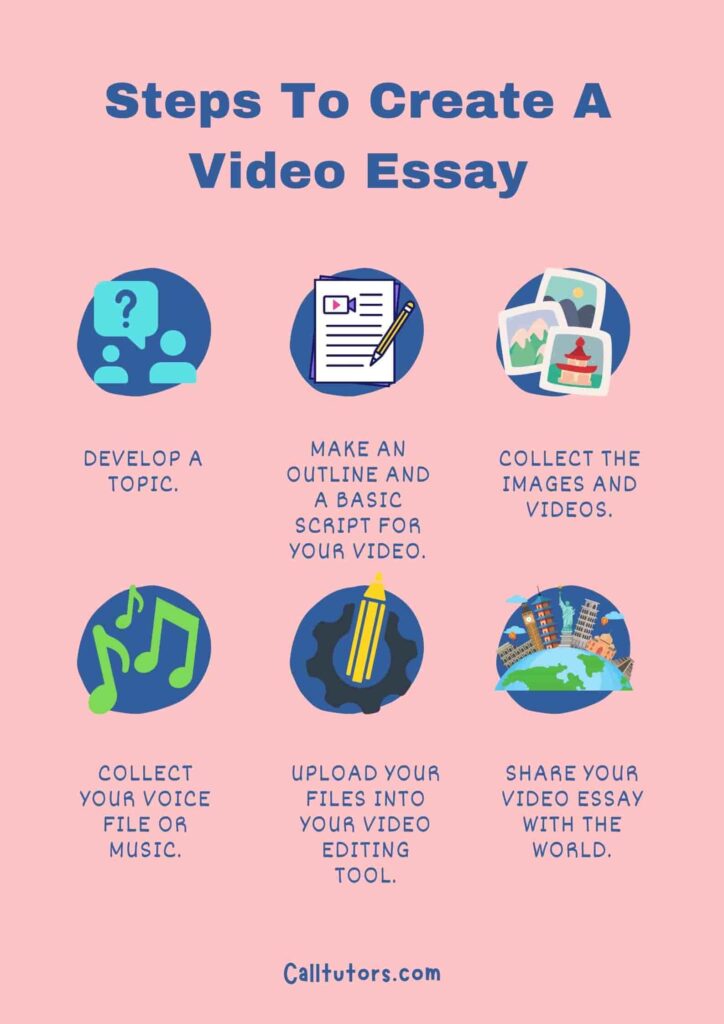
How to make a video essay?
Following are the steps involved in how to make a video essay:
1. Contemplate your topic wisely
- The first and the foremost step in how to make a video essay is to choose a topic for your essays. You can’t jump on to other steps before finalizing your topic. Your topic must address a brief content of the essay. Since it’s a videos essay therefore you have to decide a catchy title with a view to attract and allure your audience.
- While contemplating a topic for the essay you should always keep in mind that the product or content is the second thing but the title is the first thing to tell the audience about the essay.
2. Create a script and structure
- After deciding a topic now you have to create a story from your idea. Since video essays work as written essays, therefore you have to build a story on your idea in an interesting way.
- As in a written essay you have to build a structure and outline to present your story, likewise in a video essay you have to drive a video in three stages beginning, middle, and end.
- This step is very mandatory and has to be observed very cautiously. Create your narration or pictures, text beforehand so that you narrate the actual story in the perfect format.
- As soon as you will make your outline then you can write your script in an efficient and effective manner. Writing a story is an art so make it worth watching.
3. Decide the right clips and images
- By now you have decided your title, outline, and structure for your video essay. Now the next step in how to make a video essay is to choose the right clips and images to tell the story in the best manner.You can create clip by selecting the most relevant parts of your footage and trimming them down to fit your story’s pacing and structure. Additionally, consider using images that help illustrate your points or add visual interest to the video.
- Since this is the best advantage of a videos essay that you can use pictures and clips to share your views so you also have to make the best use of them accordingly.
- Always use only those pictures, clips, and texts which directly suggest your point of view or argument or your experience and so forth.
- To choose the most suitable clips and texts and images you must have a rich library of the same. The rich library will help you to find exactly what you need and want to support each and every point you make and to rebut the point you want to rebut. Conclusively, you will craft a better video.
4. Edit the video into a single essay
- You have everything ready to go and you are only left to collect and merge all the chosen images and footage into a single video to give it a form of narration.
- While editing your video essay you can use any tools related to editing the videos as there are several videos editing too . It will help you to garnish your video in an attractive manner. You can make changes in the video while remembering your targeted audiences.
How long should a video essay be?
A 10-minute video essay that is clear, focused, stylish, and well-crafted is much better than a 60-minute video essay that is loose, vague, obvious, and thrown together. Thus, concerning traditional written essays, the following are the idea of the expected length of a video essay:
| 1500-2000 words | 8-10 minutes |
| 2000-2500 words | 10-15 minutes |
| 4000-6000 words | 15-20 minutes |
Bonus Point
What are the best video editors.
Following are the best video editors that are free of cost:
(i) Lightworks: It is the best free choice for those who want to create professional-quality movies or videos without spending a penny.
(ii) Hitfilm express: It is also free-to-use video editing software. This software adjusts color balance, trim clips, and exports your projects in different video formats.
(iii) Movie Maker Online: It is a video editor that runs in your browser. to edit a video, you have to upload an unusual vertical project timeline where you can crop clops and add filters or transition effects.
(iiii) Canva: Canva is renowned for offering tens of thousands of templates in every format imaginable for use on every publishing platform. The features that make Canva video editor a fun, special, and effective tool include real-time collaboration, self-recording plus screen recording that is ideal for classes, training, and webinars, pre-licensed audio tracks, content planner, and publisher, as well as brand kit and colors. Canva’s video editor is also accessible on your browser (for online editing), desktop download (if you want offline editing), and mobile (iOS and Android).
(v) Vmaker AI: An easy-to-use AI video editor that turns your raw video footage into professional-looking videos in just one click. It automatically adds B-rolls, background music, transitions, effects, subtitles, intros, outros, and more, making your videos publish-ready with one click. Vmaker AI transforms long-form videos into short-form content and also creates highlights and teasers from your videos. What sets Vmaker AI apart is its feature-packed, full-fledged editing suite that lets the pros craft their videos to perfection.
If you are well versed with this blog, then sure, you know how to make a video essay efficiently and effectively.
Video Essay As Form Of Marketing
The video essay is the latest popular style of essay in which a short video is made to narrate a story or anything as per the genre of the essay. That is why it has emerged as an effective tool of marketing as now companies can sell advertises their products through video essays instead of advertisement videos. This is more efficient than traditional advertisements because it does not directly intend to do marketing. Instead, it depicts the importance of the product through pictures, video clips or story narration, etc. But all this is possible only when you know how to make a video essay.
Quick Links
- The Complete List Of Cause And Effect Essay Topics
- How To Write An Essay Plan?
With the emergence of technology and awareness of technology in people, the method of academics has completely changed and video essay is one of the modern aspects. In video essays, You can create clip by selecting the most relevant parts of your footage and trimming them down to fit your story’s pacing and structure. Additionally, consider using images that help illustrate your points or add visual interest to the video. It has also become a tool of digital marketing owing to its advantages. But all this is possible only when you know how to make video essays and all the guidelines thereto. It will help to make a good video essay.
Hope you have found out from the above information how to make a video essay, but if you still have any doubts, then you can help from our experts through essay writing help , write essay for me in a very short period, and how to write my essay in an easy way.
What Makes A Video Essay Great?
According to Max Marriner, intellectual accessibility, genuine or hard-hitting evidence, and an engaging host are key formulas for making a good video essay.
Who Made The First Video Essay?
Mathew Turner created a viral youtube essay arguing that Daniel LaRusso, the young hero of the 1984 film, The Karate Kid, was actually the movie’s villain. You first need to know the story behind the video he posted to youtube.
How Do You Structure A Video Essay?
The video essay will have the same features as an essay; an introduction, argument, discussion, and conclusion. Students should be enabled to approach the development of the video essay in the same way as their academic essays; research, write, plan, prepare, edit, and submit.
Similar Articles

13 Best Tips To Write An Assignment
Whenever the new semester starts, you will get a lot of assignment writing tasks. Now you enter the new academic…

How To Do Homework Fast – 11 Tips To Do Homework Fast
Homework is one of the most important parts that have to be done by students. It has been around for…
Leave a Comment Cancel Reply
Your email address will not be published. Required fields are marked *
This site uses Akismet to reduce spam. Learn how your comment data is processed .

How to Prepare for Your Written and Video Essays
Monday, October 18, 2021
Carlson School Graduate Programs
There are many crucial steps in the MBA application process, and one that can sometimes be overlooked is the essay or personal statement portion. While all application materials are taken into consideration, this portion of the process allows you to highlight your authentic self and connect all the components of your application into one cohesive story.
When you apply to a business school, they want to know about you. You’re more than a GMAT score and a resume, and the essay or personal statement portion of your application is the best way for you to showcase who you are and what you would bring to a business school program. Below are some examples of what might be included in this portion of the application as well as some tips to get you started.
Written Essay and Personal Statement
A written essay or personal statement is a chance for the business school to get to know you more closely. Most universities will give you a prompt, some guidelines, and the rest is up to you. Each prompt will likely be different for this written portion, with some business schools asking about your career goals, how you can add to their school’s community, your previous experiences, or more.
For example, the Carlson School’s MBA and Master's programs personal essay statement could ask you to address the following (or something similar):
- Why are you choosing to pursue a graduate at this time in your career? What are you hoping to accomplish by doing so?
- What excites you about being part of the Carlson School graduate program? Do you have an enterprise program that you are currently interested in and why?
- Can you tell us about how you have participated in and/or advocated for building more inclusive communities in your career?
So what makes for the best-written essays? Here are five tips to get you started.
- Be authentic. Business schools want to learn about YOU. Schools aren’t looking for just one answer, so make sure your personality shines through in your writing.
- Talk about real-life examples. Adding specific anecdotes and details can have a tremendous impact.
- Don’t just repeat your resume. Business schools have already seen your resume and your other materials, so use the essay as a way to expand on why you would be a great fit for the school. You can build on things that are mentioned on your resume, but make sure it’s additive to the rest of your application.
- If you’re a unique applicant to a business school, play it up. Business schools across the country are looking to diversify their programs, and that includes people from unique backgrounds or who have an unorthodox path to getting an MBA.
- Sell yourself. Ultimately, the essay portion of your application is your chance to sell yourself to a business school. Offer a convincing argument about why you would be a great fit for a particular school. Be sure to highlight what you will bring to the table and make sure your can-do attitude shows through.
Video Essays
In addition to written essays, some business schools also include a video essay portion of the application process. Think of this as a short elevator pitch where you’re answering a 'getting to know you' question with a member of the admissions team.
For instance, at the Carlson School, you will be asked one impromptu question from a bank of imaginative or behavioral questions selected by the school’s admissions team. You will then be given two minutes to prepare for an answer and then two minutes to record an answer.
Video essays are another great way for you to show a business school your individuality. Here are three tips for this portion of the process:
- Be yourself. Programs are using this format as a way to get to know you, your personality, and how you would fit at the school. The best video essays reveal the applicant’s personality.
- Practice, practice, practice. While students applying for the Carlson School only get one attempt at recording themselves, you can practice responding to the impromptu questions offline with a friend or colleague. Make sure you’re answering the questions directly and staying within the timeframe.
- Don’t study too hard. The video essay questions are assigned at random, so while you should practice cadence and timing, it is not recommended you memorize all of the questions. Remember, you want to share your experiences, not a script!
- Relax. The video essay is often one of the last pieces of your application. Your GMAT, letters of recommendation, and most of your application is finished. All the hard work is done, so take a deep breath to help you not come across as nervous in your video.
- Majors & Minors
- Freshman Students
- Transfer Students
- International Students
- Returning Students
- Class Profile
- Scholarships
- Impact Core
- Experiential Learning
- Immersion Core
- International Experience
- First Year Experience
- Organizations
- Student Ambassadors
- Requirements & Deadlines
- Deferred Entry
- International Applicants
- Specializations
- Employment Statistics
- Alumni Profiles
- Clubs & Organizations
- Global Experience
- State Authorization
- Residency Options
- Student Life
- Leadership Development
- International Residency
- Global Team Project
- Lingnan College
- WU Executive Academy
- Valuation Lab
- Tuition & Aid
- Artificial Intelligence in Business
- Partner Schools
- CFA Affiliation
- Requirements
- Student Papers
- Graduate Placement
- Award Winners
- Department Staff
- Dual Degrees
- Custom Solutions
- Talent Development Partnerships
- Carlson General Management Program
- Success Stories
- Learning Measurement & Impact Services
- Short Courses by Date
- Participant Stories
- Executive Certificates
- Centers & Institutes
- Departments
- Behavioral Labs
- 1st Tuesday Previous
- Insight to Action
- Regional Events
- Professional Development Webinars
- Past Events
- National Chapters
- International Chapters
- Affinity Networks
- Corporate Clubs
- With Students
- Career Coaching
- Lifelong Learning
- Subscribe to Magazine
- Submit Class Note
- Engagement Mode
- People & Partners
- Gender Equality Action Group
- Teaching Cases
- Research Grants
- Publications
- COVID-19 Hospitalization Tracking Project
- Faculty, Fellows, and Partners
- Partnerships
- Get Involved
- Program Finder
- Connecting Flight
- Identity Course
- Financial Aid
- Parents & Families
- Policies & Forms
- Identity Abroad
- Health & Safety
- Partner School
- Global Executive Programs
- Important Dates
- Student Visa
- Fees & Expenses
- Arrival & Welcome Program
- Health and Safety Resources
- Global Education Management
- Going Global Newsletter
- Year in Review
- Speaker Series
- Video Series
- Director's Message
- Advisory Council
- Alumni Newsletter
- Herman Library
- Support the Center
- Program Staff
- Advisory Committee
- What We Offer
- Benefactors
- Advisory Board
- Entrepreneurship in Action
- For Students
- For Entrepreneurs
- For Mentors
- About the Institute
- Ignite Conference
- Joseph M. Juran
- 2014-2018 Winners
- 2009-2013 Winners
- 2004-2008 Winners
- 1999-2003 Winners
- Analytics Maturity Model
- Project Workshop
- National Industry Council
- Executive in Residence
- MILI Student Association (MILIsa)
- MILI Undergraduates (MILIu)
- Case Competitions
- MILI Specialization
- Platou Leadership Award
- Data Resources
- Finch Fellows
- For Clients
- Academic Programs
- Hotel & Travel
- 2010-present
- Industry Partners
- Friday Research Workshops
- Seminar Series
- New Product Design
- Undergraduate Programs
- Graduate Programs
- Student Dissertations
- Executive Committee
- Board of Advisors
- Capstone Projects
- Undergraduate
- Employment Reports
- Companies & Employers
- Global Learning
- Full-Time MBA Students
- PTMBA & MSF Students
- Undergraduate Students
- MBA Students
- Marketing Students
- Faculty & Staff
- Methodology
- Project Structure
- Entrepreneurship
- Emerging Leaders of Color
- Business Innovation Academy
- Analytics U
- Carlson THRIVE
- Living in Minneapolis
- Hire Students
- Engage Student Talent
- Access Expertise
- Ways to Give
- Investors Circle
- Diversity, Equity, and Inclusion
- Student Consultants
- Executive Fellows
- Senior Staff
- Current Initiatives
- Cultural Competency
- Annual Report
- Frequently Asked Questions

Get science-backed answers as you write with Paperpal's Research feature
How to Structure an Essay

Essay writing is a fundamental skill, a basic task, that is expected of those who choose to pursue their undergraduate and master’s degrees. It constitutes a key requirement for students to complete a given course credit. However, many students and early career researchers find themselves struggling with the challenge of organizing their thoughts into a coherent, engaging structure. This article is especially for those who see essay writing as a daunting task and face problems in presenting their work in an impactful way.
Table of Contents
- Writing an essay: basic elements and some key principles
- Essay structure template
- Chronological structure
- Problem-methods-solutions structure
- Compare and contrast structures
- Frequently asked questions on essay structure
Read on as we delve into the basic elements of essay writing, outline key principles for organizing information, and cover some foundational features of writing essays.
Writing an essay: basic elements and some key principles
Essays are written in a flowing and continuous pattern but with a structure of its own. An introduction, body and conclusion are integral to it. The key is to balance the amount and kind of information to be presented in each part. Various disciplines may have their own conventions or guidelines on the information to be provided in the introduction.
A clear articulation of the context and background of the study is important, as is the definition of key terms and an outline of specific models or theories used. Readers also need to know the significance of the study and its implications for further research. Most importantly, the thesis or the main proposition should be clearly presented.
The body of the essay is therefore organized into paragraphs that hold the main ideas and arguments and is presented and analyzed in a logical manner. Ideally, each paragraph of the body focuses on one main point or a distinct topic and must be supported by evidence and analysis. The concluding paragraph should bring back to the reader the key arguments, its significance and food for thought. It is best not to re-state all the points of the essay or introduce a new concept here.
In other words, certain general guidelines help structure the information in the essay. The information must flow logically with the context or the background information presented in the introductory part of the essay. The arguments are built organically where each paragraph in the body of the essay deals with a different point, yet closely linked to the para preceding and following it. Importantly, when writing essays, early career researchers must be careful in ensuring that each piece of information relates to the main thesis and is a building block to the arguments.
Essay structure template
- Introduction
- Provide the context and share significance of the study
- Clearly articulate the thesis statement
- Body
- Paragraph 1 consisting of the first main point, followed by supporting evidence and an analysis of the findings. Transitional words and phrases can be used to move to the next main point.
- There can be as many paragraphs with the above-mentioned elements as there are points and arguments to support your thesis.
- Conclusion
- Bring in key ideas and discuss their significance and relevance
- Call for action
- References
Essay structures
The structure of an essay can be determined by the kind of essay that is required.
Chronological structure
Also known as the cause-and-effect approach, this is a straightforward way to structure an essay. In such essays, events are discussed sequentially, as they occurred from the earliest to the latest. A chronological structure is useful for discussing a series of events or processes such as historical analyses or narratives of events. The introduction should have the topic sentence. The body of the essay should follow a chorological progression with each para discussing a major aspect of that event with supporting evidence. It ends with a summarizing of the results of the events.
Problem-methods-solutions structure
Where the essay focuses on a specific problem, the problem-methods-solutions structure can be used to organize the essay. This structure is ideal for essays that address complex issues. It starts with presenting the problem, the context, and thesis statement as introduction to the essay. The major part of the discussion which forms the body of the essay focuses on stating the problem and its significance, the author’s approach or methods adopted to address the problem along with its relevance, and accordingly proposing solution(s) to the identified problem. The concluding part offers a recap of the research problem, methods, and proposed solutions, emphasizing their significance and potential impact.
Compare and contrast structures
This structure of essay writing is ideally used when two or more key subjects require a comparison of ideas, theories, or phenomena. The three crucial elements, introduction, body, and conclusion, remain the same. The introduction presents the context and the thesis statement. The body of the essay seeks to focus on and highlight differences between the subjects, supported by evidence and analysis. The conclusion is used to summarize the key points of comparison and contrast, offering insights into the significance of the analysis.
Depending on how the subjects will be discussed, the body of the essay can be organized according to the block method or the alternating method. In the block method, one para discusses one subject and the next para the other subject. In the alternative method, both subjects are discussed in one para based on a particular topic or issue followed by the next para on another issue and so on.
Frequently asked questions on essay structure
An essay structure serves as a framework for presenting ideas coherently and logically. It comprises three crucial elements: an introduction that communicates the context, topic, and thesis statement; the body focusing on the main points and arguments supported with appropriate evidence followed by its analysis; and a conclusion that ties together the main points and its importance .
An essay structure well-defined essay structure enhances clarity, coherence, and readability, and is crucial for organizing ideas and arguments to effectively communicate key aspects of a chosen topic. It allows readers to better understand arguments presented and demonstrates the author’s ability to organize and present information systematically.
Yes, while expert recommend following an essay structure, early career researchers may choose how best to adapt standard essay structures to communicate and share their research in an impactful and engaging way. However, do keep in mind that deviating too far from established structures can hinder comprehension and weaken the overall effectiveness of the essay, By understanding the basic elements of essay writing and employing appropriate structures such as chronological, problem-methods-solutions, or compare and contrast, researchers can effectively organize their ideas and communicate their findings with clarity and precision.
Paperpal is a comprehensive AI writing toolkit that helps students and researchers achieve 2x the writing in half the time. It leverages 21+ years of STM experience and insights from millions of research articles to provide in-depth academic writing, language editing, and submission readiness support to help you write better, faster.
Get accurate academic translations, rewriting support, grammar checks, vocabulary suggestions, and generative AI assistance that delivers human precision at machine speed. Try for free or upgrade to Paperpal Prime starting at US$19 a month to access premium features, including consistency, plagiarism, and 30+ submission readiness checks to help you succeed.
Experience the future of academic writing – Sign up to Paperpal and start writing for free!
Related Reads:
Powerful academic phrases to improve your essay writing .
- How to Paraphrase Research Papers Effectively
- How to Use AI to Enhance Your College Essays and Thesis
- How to Cite Social Media Sources in Academic Writing?
Leveraging Generative AI to Enhance Student Understanding of Complex Research Concepts
You may also like, leveraging generative ai to enhance student understanding of..., how to write a good hook for essays,..., addressing peer review feedback and mastering manuscript revisions..., how paperpal can boost comprehension and foster interdisciplinary..., what is the importance of a concept paper..., how to write the first draft of a..., mla works cited page: format, template & examples, how to ace grant writing for research funding..., how to write a high-quality conference paper.

IMAGES
VIDEO
COMMENTS
Every video analysis essay should have a central idea, or thesis, that ties the film together. 2. Write a Summary. Starting with a brief allows you and your team to document the answers to the most pressing project concerns. It ensures that everyone participating in the video production is on the same page.
The challenge is to focus on your presentation and choose your words wisely. 1. Choose a topic. Next, decide on the topic of the video. Some schools may invite you to discuss a particular topic, and others will want the video essay to serve as a personal introduction in place of an interview. If the video serves as an interview, include the ...
How do you make a video essay? How do you pick an idea, research movies and write a script? Here's my tutorial for how to write a video essay, with more epis...
The Video Essay Process. This section will give an introductory overview of the stages required to create a video essay. Video essayers advice is to start simple and work through each stage of the video production process. Visit the Resources page of this guide for more. Planning.
In this video you'll learn how to make a simple video essay from start to finish.~UPDATE: I'm about to launch a course sharing everything I know about making...
A video essay is a video that analyzes a specific topic, theme, person or thesis. Because video essays are a rather new form, they can be difficult to define, but recognizable nonetheless. To put it simply, they are essays in video form that aim to persuade, educate, or critique. These essays have become increasingly popular within the era of ...
Video essays are scholarly videos that invite researchers and class members to explore the audiovisual and multimedia language to make an academic argument. When applied to film research and pedagogy, the video essay is thus a recursive text. That is, the object of study, film, is mediated, or rather, performed, through the film medium.
Once you have a well-developed topic and/or research question, then you can Create an Outline and Write a Script for your video essay. Utilizing your background research, evidence from whichever piece(s) of media you are analyzing/discussing, and your own arguments/interpretations of that media, you can build an outline and write a basic script ...
There are already a number of very useful resources on how to make video essays, such as Greer Fyfe and Miriam Ross's ' How-to Video Essays ' (2015) and 'Teaching with Video in the 21st Century: Clips, Essays, Full Length Films and TV Programs' (Butler et al. 2015), both available in The Audiovisual Essay project in the REFRAME website.
In this comprehensive "How To" video Joey will cover the basics of creating a Video Essay: arguing your thesis creatively and engagingly. question analysis. the research process. writing your well prepared argument. check and record. the visuals. editing. referencing.
In the last 10 years, YouTube video essays — on movies, on TV shows, on games, on pop culture, on everyday life — have entered a renaissance. But how do you make a video essay?
How do you make a video essay? How do you capture footage in the best possible quality? What equipment do you need to do so? How do you record voiceover?Here...
As a structure, the video essay is thesis-driven, and uses images with text so that the audience can read and interpret the idea or argument in a multimodal way. In educational settings, the term video essay is used broadly for teacher/student-learner generated video and as a vehicle to transmediate between written-text to digital forms.
The sample video essay linked at the right will give you a good idea about how videos and essay come together to create an argument in a video essay. Just click on the image to visit the link. The process for creating a video essay isn't that different from creating a traditional essay—at least in the beginning. However, you'll be working ...
A webcam and microphone are required for this section. Since the video essay is a little different from the standard application requirements, here are some tips to help you prepare.1. Setting. It is important that we are able to hear and see you. Before you start recording, make sure you are in a quiet space with good lighting.
Look at all the different things Puschak considers visual rhetoric and think about how he's using the video essay form to make honed, precisely-executed arguments about popular culture. Dennis Hartwig and John P. Hess, FilmmakerIQ. Hartwig and Hess use video essays to explain filmmaking technique to aspiring filmmakers.
If you can play a film on your computer then you can grab still images from it. On a PC. Press PrtScn and then find somewhere you want to paste the image (ie. image editing software). Press Ctrl+V. If you have captured the whole computer screen you may need to crop the image. On a Mac. Press Command+Shift+3.
Now, you can turn the script to a video. FlexClip understands the script, finds the pictures that relate to the text, and then combines them. Copy and paste and video script to the FlexClip's text to video tool and try if you can get a satisfying video essay. Turn Script to Video. Step 3.
A couple things I try to remember so far: Sound quality matters. Make it as good as possible. A brief intro, give the audience an OUTLINE, and THEN launch into your essay. (personally) I need to talk slower and work on my speech pacing. Have movement, don't let the visuals stagnate and bore the viewer, however;
Once you have all you need, the writing process should come easily. As the title suggests, it's just an essay, but in video form. Introduce your subject, make your points about your subject and substantiate it with research, and then conclude the video by restating your point and possibly the effects it has.
Following are the steps involved in how to make a video essay: 1. Contemplate your topic wisely. The first and the foremost step in how to make a video essay is to choose a topic for your essays. You can't jump on to other steps before finalizing your topic. Your topic must address a brief content of the essay.
How do you make a video essay? How do you edit together footage and voiceover to make an interesting final product? How do you check exports to make sure the...
Video essays are another great way for you to show a business school your individuality. Here are three tips for this portion of the process: Be yourself. Programs are using this format as a way to get to know you, your personality, and how you would fit at the school. The best video essays reveal the applicant's personality.
1. What is an essay structure? An essay structure serves as a framework for presenting ideas coherently and logically. It comprises three crucial elements: an introduction that communicates the context, topic, and thesis statement; the body focusing on the main points and arguments supported with appropriate evidence followed by its analysis; and a conclusion that ties together the main points ...
WATCH | We hear from the seven political leaders gathering over the next two days to negotiate an agreement to provide voters with a clear alternative...
How do you make a good video essay? In this video I give my two cents on the topic, as well as start drama and slag off my peers.Like and subscribe. It's fre...
Read CNN's analysis and commentary of the first 2024 presidential debate between President Joe Biden and former President Donald Trump in Atlanta.